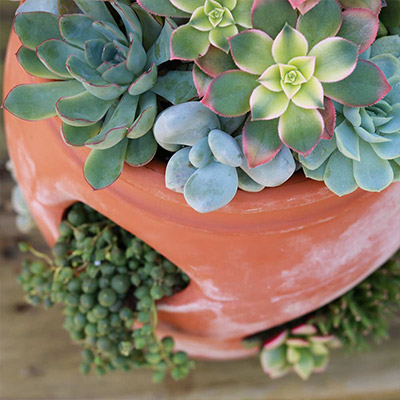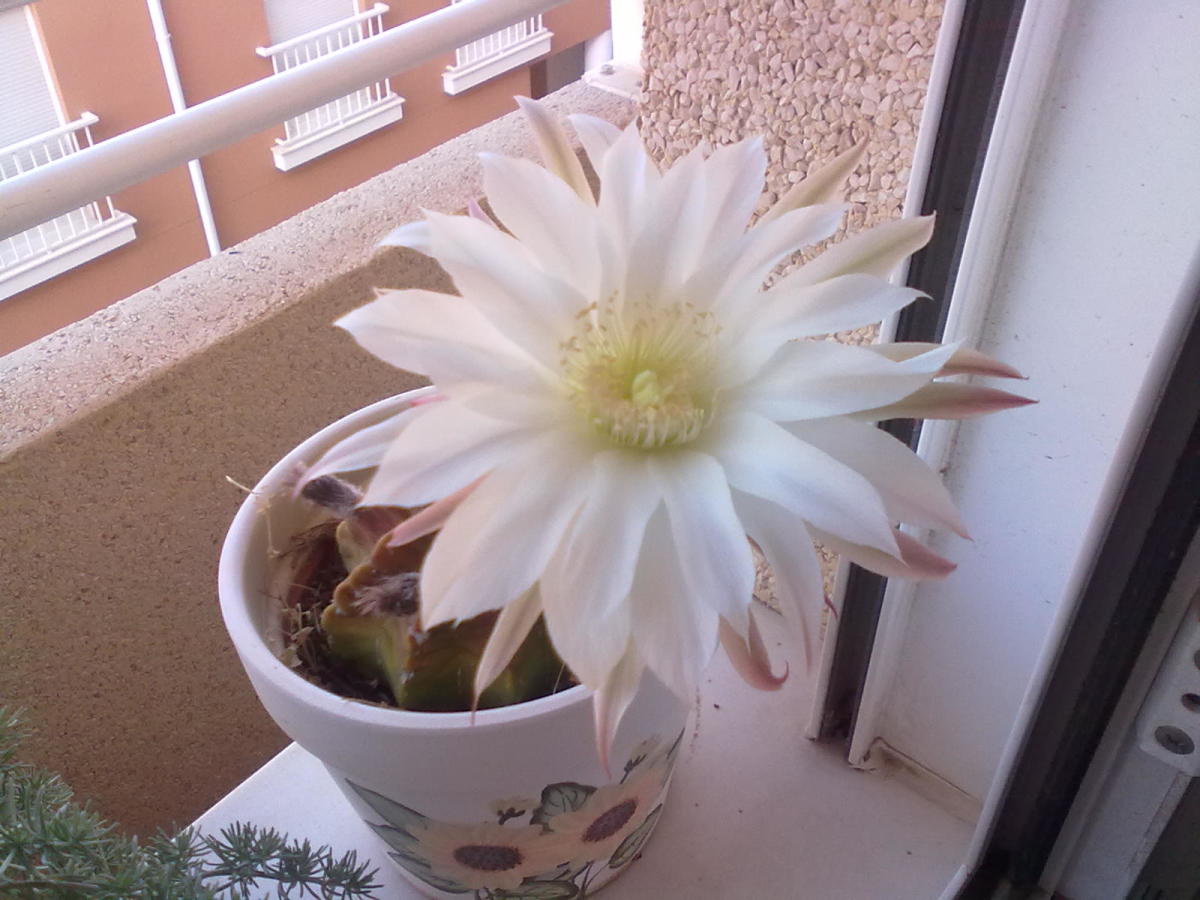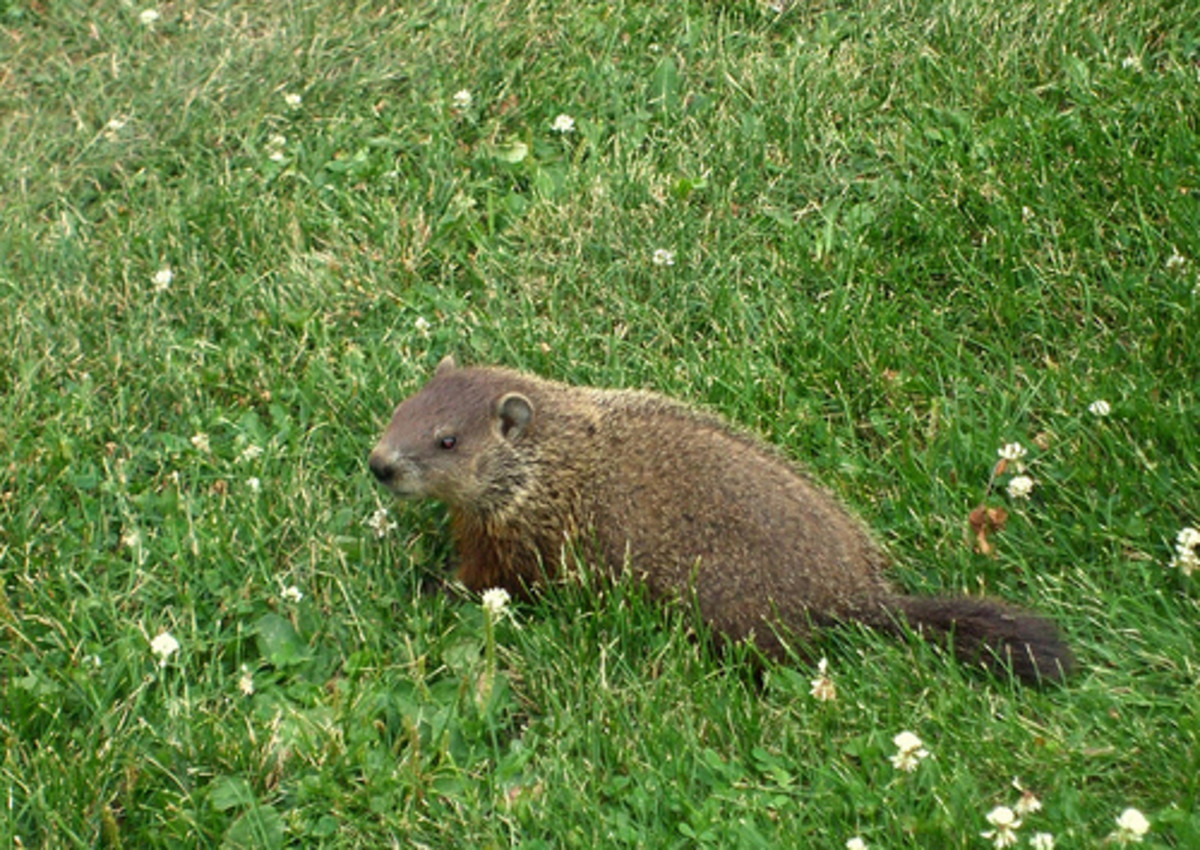Pour Succulents Properly - Tips & Tricks

Pour succulents properly - Tips & Tricks
Succulents occur in a wide variety of plant families and thrive in a variety of forms. What they all have in common is the ingenious ability to store water in leaves or roots. This floral talent requires a different water supply than that of non-succulents. Read here how to water the survivalists properly.
How to pour succulents with expertise – the best tips
Bringing the water supply of all succulent species to a common denominator is an undertaking in epic dimensions. Nevertheless, various basic principles apply to succulents. Which ones are summarized the following tips:
- During the vegetation phase, water only when the succulent soil is noticeably dried
- The thicker the leaves, the less water is needed
- Drain coasters after 10 to 15 minutes to prevent waterlogging
- Do not pour into rosettes or leaffunnels (4.75€ on Amazon*)
- In winter, just water from time to time so that a root bale does not dry out
- Winter hardy Do not water succulents in the bed from October to February
- Only use plant vessels with a soil opening as a water drain
The quality of the substrate is significantly involved in the professional water balance. For succulents, please use only a permeable, lean soil consisting of a mix of organic and inorganic components. Before potting a plant, test the substrate. It should not be moulded into a sphere even in wet conditions. Otherwise, mix lime-free quartz sand (€8.99 on Amazon*) or lava granules (€13.76 on Amazon*).
Tips
For your succulents, please use mainly rainwater or stale tap water. If the exotic plants are tracted with hard water, the lime content in the substrate accumulates. As a result, a fatal chain reaction sets in, at the end of which geldbaum, Christ's thorn and fellows lose their leaves.
How to hibernate succulents – tips for a healthy winter season
If your succulents refuse the desired flowering splendour, the houseplants lacked the winter rest. Only a species-appropriate hibernation will match the exotic jewels to a wasteful flowering in the coming season. You can find out how to do it right this year here.
Dry coolness is the secret recipe for winter time
Succulents come from regions of the world where rain is also in short supply during winter. In order to professionally hibernate the exotic life artists and at the same time motivate them to flower induction, a combination of drought and temperature reduction is essential. Here's how:
- From November to February, succulent plants spend in a brighter, cooler location
- Ideally place at a temperature 5 degrees Celsius lower
- During the winter, just pour from time to time so that the substrate does not dry out
- Do not fertilize from the end of October to the beginning of March
Large succulents can be poured for the last time in early November. Under normal conditions, this water supply lasts until February. Small succulents water them in a loopy way, provided the substrate is well dried. To protect against dry heating air, spray the leaves regularly with lime-free water.
For winter-flowering succulents, the resting phase proceeds under the opposite sign. Christmas stars, for example, begin their vegetation rest in spring. If the houseplants experience a temperature drop to 14 to 15 degrees Celsius for 4 to 6 weeks during this time, combined with a reduced water supply, they put on their flower dress again in time for the next Christmas.
Tips
In order for hardy succulents to hibernate outside, they are dependent on a protection against wetness. Even a simple superstructure of 4 posts and a translucent roof made of plexiglass protects cacti and other succulent plants from cold death. In addition, you will stop casting completely from November to February.
Succulents hibernate outside – how does it work?
Some selected succulent species are hardy and survive the cold season in the bed. The hardened exotics still can't do without gardening assistance. So you can hibernate your succulents outside with success.
Modified care and wet protection set the course
From August, the care program will be modified so that your succulents prepare for the coming winter. Here's how:
- At the end of August, gradually pourless
- Do not fertilize from the beginning of September
- Cover ground cover with foliage before the first frost
- Protect large succulents from rain and snow with a transparent superstructure
Only in the bed do succulents have the chance to hibernate outside. In the narrowly sized earth volume of a vessel with a diameter of less than 30 cm, there is little chance of an unscathed winter time outdoors, as the root bales freeze through. Large buckets are given a thick winter coat made of foil and coconut mats (118.19€ on Amazon*) as well as a wooden backing. In a wind- and rain-protected niche, hardy succulent species can withstand frosty temperatures.








